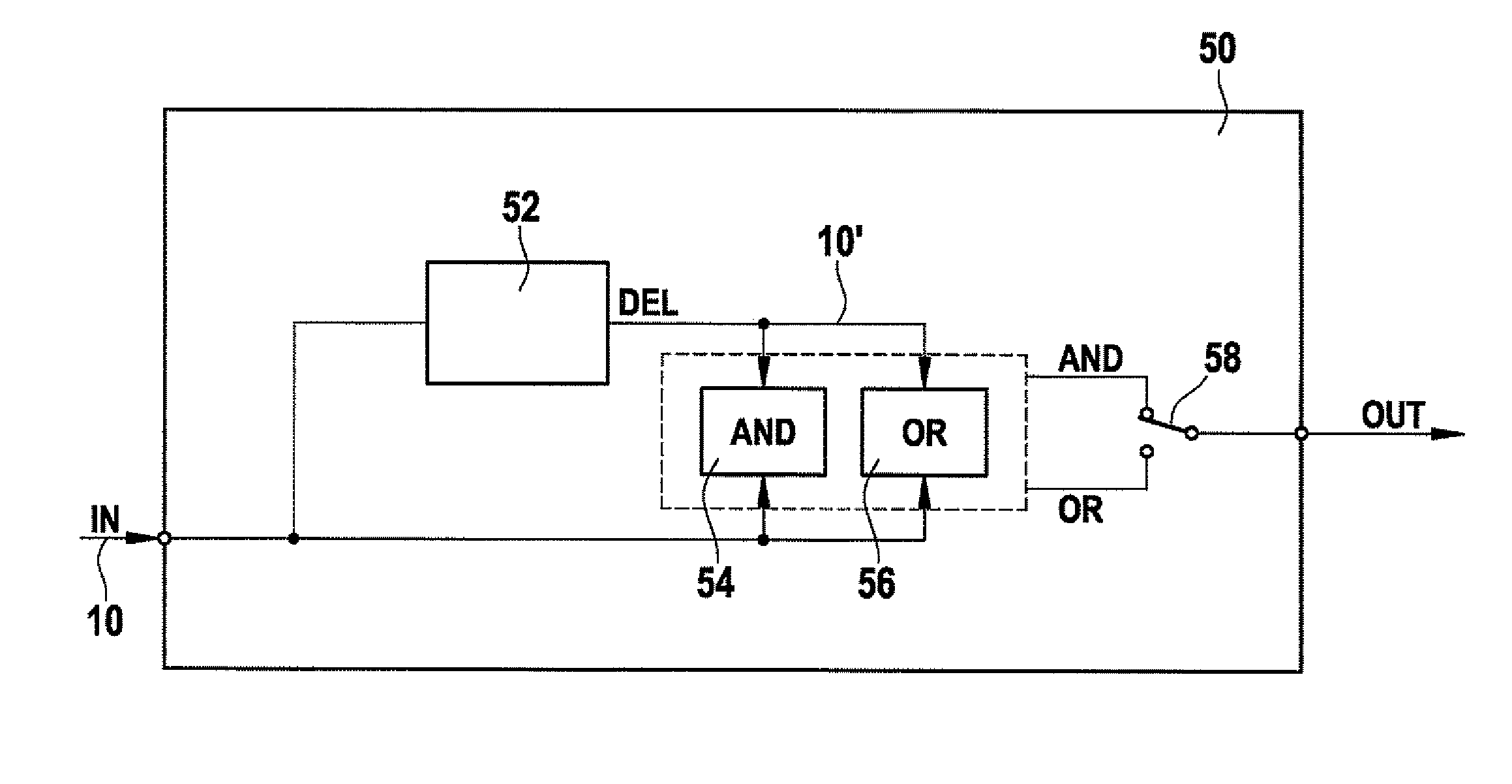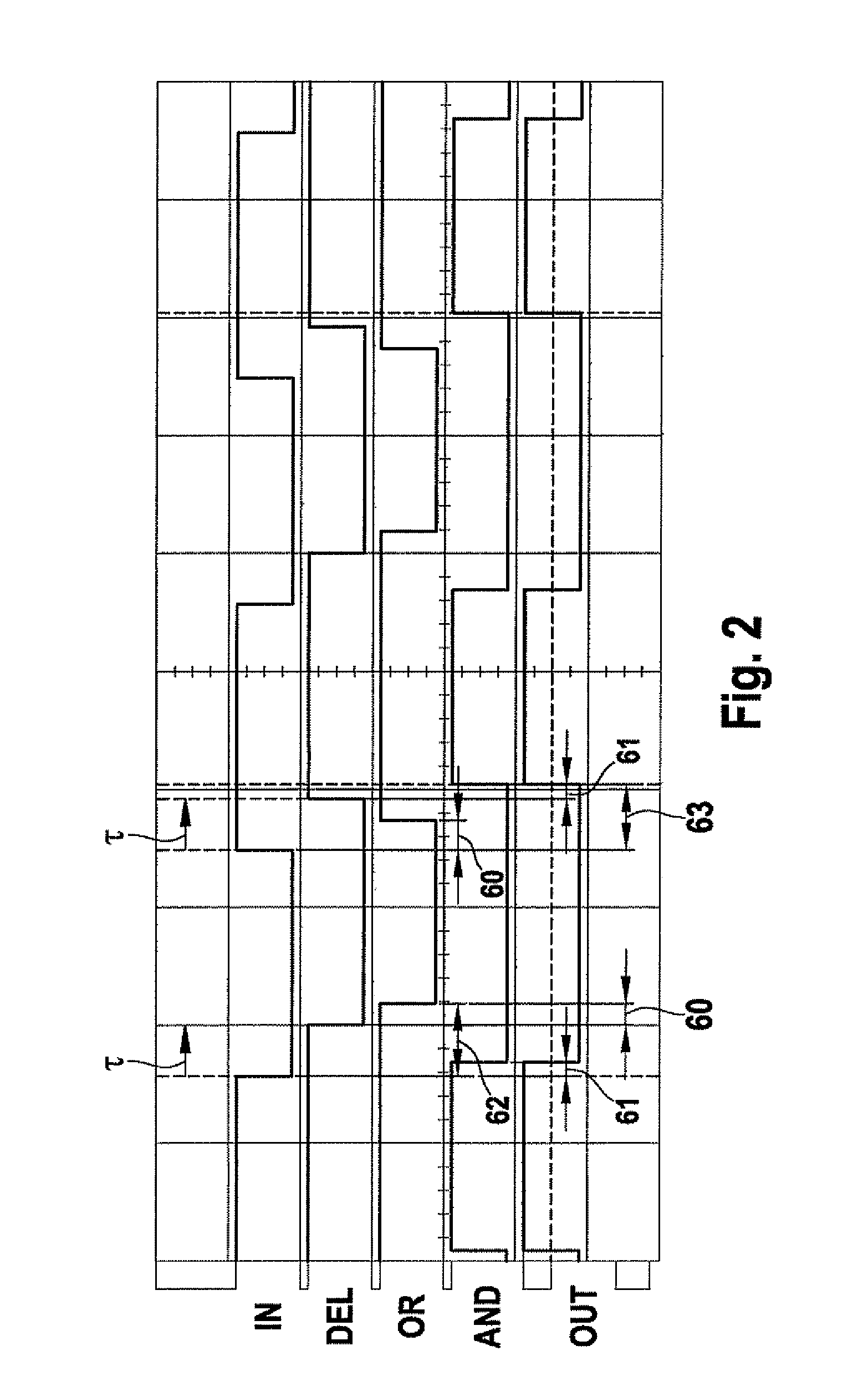Method and system for compensating asymmetrical delays
a technology of asymmetric delay and delay, applied in the field of method and system for compensating asymmetric delay, can solve the problems of stochastic delay, high transmission channel demand, and both systematic asymmetric delay, and achieve the effects of reducing quality, increasing the immunity of data transmission system, and increasing economic benefits
- Summary
- Abstract
- Description
- Claims
- Application Information
AI Technical Summary
Benefits of technology
Problems solved by technology
Method used
Image
Examples
Embodiment Construction
[0039]The networking of control units, sensor systems and actuator systems with the aid of a communications system and a communications link such as in the form of a bus system, has increased drastically in recent years in the construction of modern motor vehicles or also in machine construction, especially in the field of machine tools, as well as in automation. Synergy effects by distributing functions to a plurality of users, which are embodied as control devices, for example, are able to be achieved in the process. These are called distributed systems.
[0040]Increasingly, the communication between various users of such a data transmission system is taking place via a bus system. Communication traffic on the bus system, access and receiving mechanisms, as well as error handling are regulated by a protocol. One conventional protocol is, for instance, the FlexRay protocol, which is currently based on the FlexRay protocol specification v2.1. FlexRay is a fast, deterministic and error...
PUM
 Login to View More
Login to View More Abstract
Description
Claims
Application Information
 Login to View More
Login to View More - R&D
- Intellectual Property
- Life Sciences
- Materials
- Tech Scout
- Unparalleled Data Quality
- Higher Quality Content
- 60% Fewer Hallucinations
Browse by: Latest US Patents, China's latest patents, Technical Efficacy Thesaurus, Application Domain, Technology Topic, Popular Technical Reports.
© 2025 PatSnap. All rights reserved.Legal|Privacy policy|Modern Slavery Act Transparency Statement|Sitemap|About US| Contact US: help@patsnap.com



